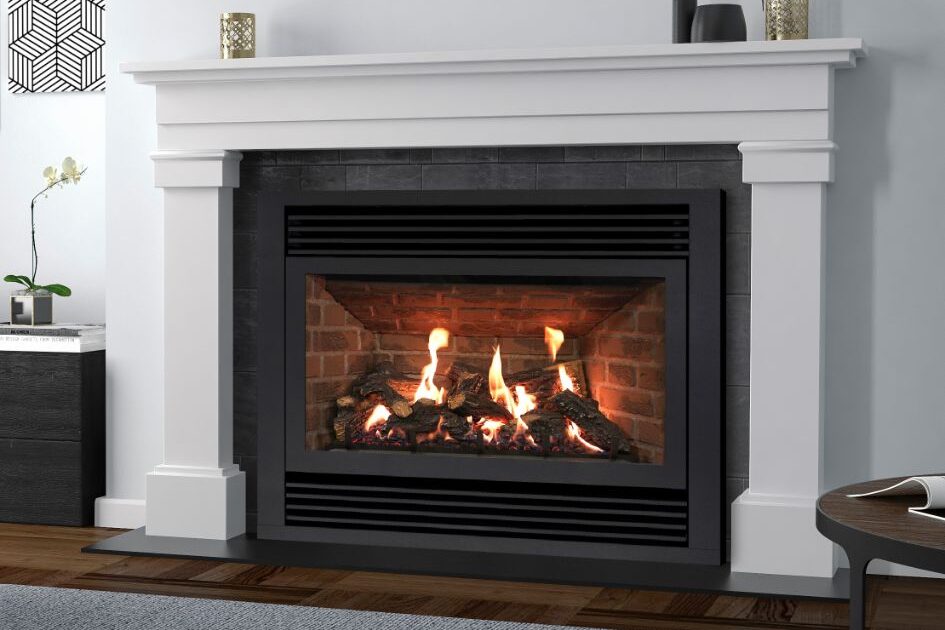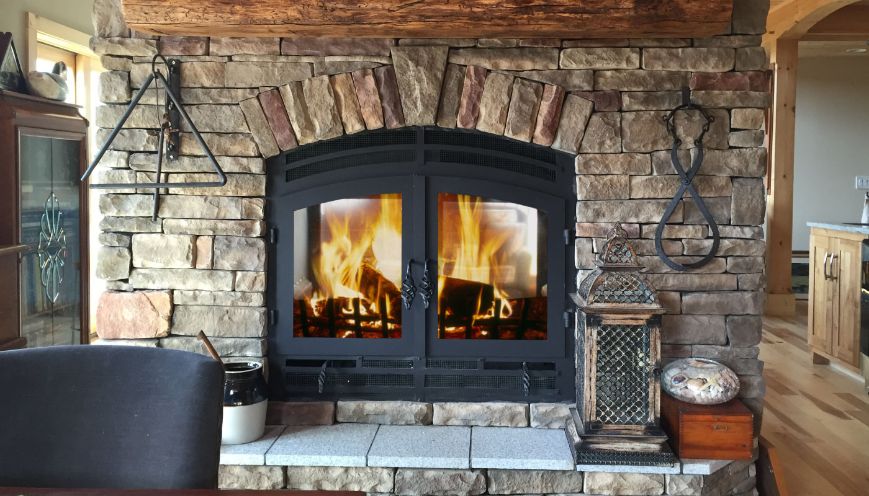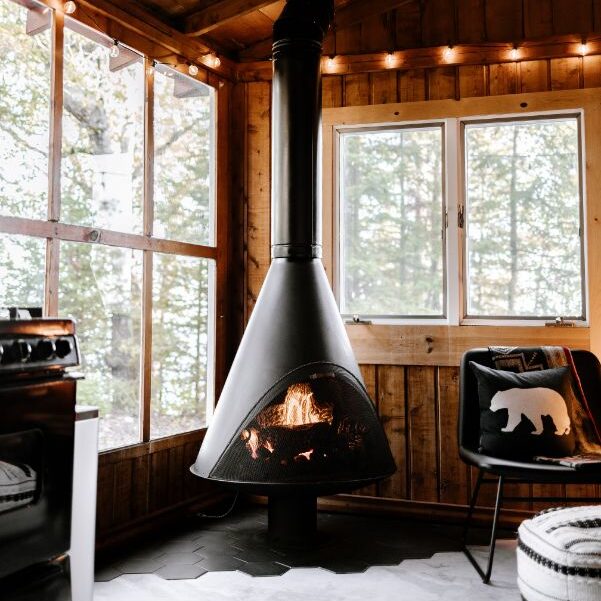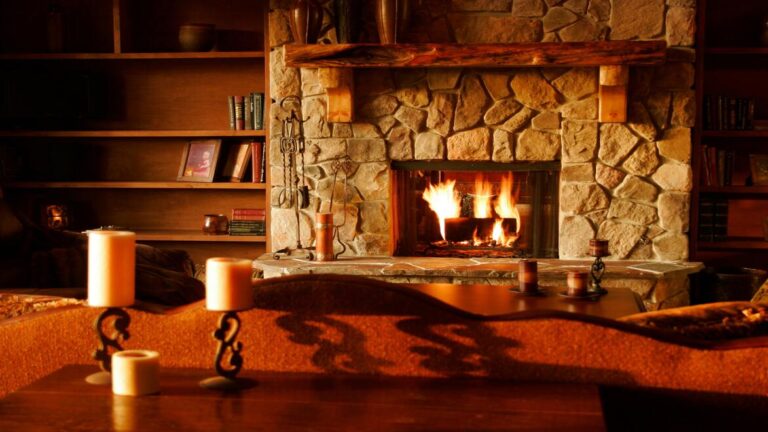This article will be helpful to you if you decide to install a fireplace in your basement. Continue reading to the end so we can help you get the ideal basement fireplace for your home.
A fireplace is a wonderful addition to any house. They not only have a pleasing aesthetic but also provide warmth and vibrancy. Although they can be a real pleasure, basement fireplaces can occasionally cause a number of issues. When setting up a fireplace in your basement, take into account the fire safety regulations and local building codes.
Read the article and find out the best basement fireplace for your home.
Are Fireplaces Allowed In Basements?
In many regions of the nation, basement fireplaces are permitted. You might be able to include a fireplace in your basement, depending on local rules set forth by your Homeowners Association (HOA), the building code, and local law.
To make sure you can incorporate a fireplace into your basement in a safe manner, it’s best to get in touch with local regulators before starting construction. It is also beneficial to speak with a fireplace expert to determine how a basement fireplace addition might fit into your house.
Regulations regarding wiring, chimney space, and ventilation can all make it impossible to have a fireplace in a basement. Read More: What’s The Difference Between Cellar And Basement?
Types of Fireplaces
Your fireplace must have a way to vent the smoke outside for your basement remodeling project. Different furnace types are available from fireplace manufacturers that don’t need a conventional chimney. You will, however, require a vent or another method to expel the burning fumes.
You should also consider how easy it will be to maintain the furnace. It’s important to perform upkeep tasks like cleaning the fireplace of ash and debris.
There are three types of furnaces: wood-burning, gas, and electric. You can also learn the pros and cons of each type.
Gas Fireplace

In order to heat your space, direct vent gas fireplaces attach to a gas line. They are more effective than fireplaces that burn wood because gas is a much more effective fuel. Gas fires generate heat with a conversion rate of 75 to 99%, compared to wood fires 10 to 30%.
Additionally, there is not much cleanup needed after using a gas fireplace. There is no need to remove the ashes or replace the wood.
Direct vent gas fireplaces come in a wide variety of styles. For the exterior, you can choose from brick, tile, wood, stone, or another material. To give the fireplace a more realistic feel, faux logs can also be added.
- Pros
Gas fireplaces require less regular maintenance than wood fireplaces and don’t require you to carry wood inside your house. They can function in the event of a power outage and connect directly to your gas line.
They also convert fuel to heat much more effectively than electric or wood fireplaces, making them the most energy-efficient option of all.
- Cons
Depending on the location of the fireplace and the gas line, installing this kind of fireplace may be expensive. Furthermore, gas fireplaces might not have the same authentic appearance as wood-burning fireplaces.
However, the initial cost of installation might be justified by the energy savings, and faux logs can be installed to mimic the appearance of a wood fireplace.
Electric Fireplace

Electric fireplaces work by heating internal coils with electricity, which is then dispersed by a tiny internal fan. These fireplaces plug straight into the wall and don’t need a ventilation system.
These fireplaces are available in a wide range of forms, dimensions, and textures. Even though their flames are fake, they look very lifelike, and you won’t hurt yourself if you accidentally brush up against one of these fireplaces.
- Pros
The most convenient for installation and upkeep are electric fireplaces. They don’t need to be constantly watched, so you can put them pretty much anywhere in your house or apartment. No fumes are produced, and there is no need to keep firewood on hand.
- Cons
They display a picture of a flame rather than a real flame. Depending on how frequently you use them, your electric bill may increase significantly, and you cannot use them when the power is out.
Wood Burning

A chimney, sufficient ventilation around the fireplace, and, of course, a place to store wood nearby for the fire are all requirements for a wood-burning fireplace. This may work better in basements with more space.
- Pros
The most appealing aesthetic feature of wood fireplaces is tradition. When the power is out, you can cook and heat your home with a wood fireplace.
- Cons
Wood fireplaces do, however, have some drawbacks.
For this fireplace to function, firewood must always be available. A wood-burning fireplace cannot be left unattended, and routine cleaning and maintenance are requirements. In comparison to gas fireplaces, they are also less effective at heating a house.
Why Should I Have A Fireplace In My Basement?
If you live in a temperate climate, the basements of your home are particularly chilly. If your basement has been turned into a living area, a fireplace is ideal for controlling seasonal temperatures.
- A fireplace improves the aesthetics of the space, especially if it is well-built, placed, and designed.
- As long as you don’t choose an electric fireplace, adding one will reduce your energy use.
- A dull room is brightened by fireplaces with flames.
Why Do Old Houses Have Fireplaces in the Basement?

The impact of European colonies that established themselves in America would be the reason for this. Basements, which are typically located underground, used to serve as kitchens in the past. Through the middle of the 20th century, this practice remained common, particularly in Europe.
In America, posh homes, inns, and taverns were the primary settings for this design. A basement fireplace typically had a hearth that connected to another hearth that was installed on the first floor to heat it, another hearth to heat the second floor, and so on.
In the past, fireplaces were essential, particularly during the cold winter months when there were no other options for heating. The majority of the time, however, kitchens were located in basements with fireplaces. This was occasionally used to indicate the owner’s social standing.
Cost to Install Gas Fireplace in Basement
A gas-powered fireplace is one contemporary option; it works similarly to a stove; all you have to do is press the “start” button to get the fire roaring in your chimney. These days, people prefer this more. It is better than electric ones because you can use it even without power, and it is more effective than wood-burning ones because it won’t need wood.
Due to the requirement for a clean chimney, which can cost up to $200 to clean, the cost of installing one is high, ranging from $500 to $3,500. It can cost more than $2,000 to purchase labor, inserts, vents, and tubing.
You might also think about installing a flueless gas stove because it doesn’t require a chimney because it converts carbon monoxide into harmless carbon dioxide and water vapor using a catalytic converter. With that said, the room must have adequate ventilation.
This might not be the best option if your basement lacks the minimum 100 cm2 of air ventilation that is necessary. Yes, this could save money since the chimney doesn’t need to be installed, but there are still other conditions that must be met before installation.

The benefits you can obtain over its competitors make up for this. Wood can be challenging to come by if you live in an urban area. A gas fireplace, as opposed to an electric one, is self-operating and has a real fire, whereas an electric fireplace does not.
Common Problems With Basement Fireplaces
There are some problems you should pay attention to if you want to install a fireplace in your basement.
- Movement Of Air
Much like living things, houses have air movement, which is how they essentially breathe. Air is drawn in on the lower levels and escapes on the upper levels. Modern homes are constructed to be more airtight than older homes, which frequently causes the flow of air to be impeded.
Although it can save money to keep air from leaking in from the outside, doing so may harm fireplaces, especially those on lower levels of the house.
- Cold Air
If you’ve noticed that cold, outside air keeps coming into your home through your basement chimney, the problem is probably caused by air being drawn into the house, as mentioned above.
To start a good fire in the basement fireplace, that chilly column of air needs to be dispersed with a newspaper torch or something similar. It will improve the draft if you can get the fire to burn hot. It’s important to remember that it’s very risky to ever use flammable liquids to fan a fire.
- Stinky Air
You might experience an unpleasant odor as a result of the air flowing into your basement through the chimney. The possibility of a potent smell can be high depending on the chimney’s condition.

To make sure that your chimney doesn’t have a thick coating of flammable creosote, make sure to schedule annual chimney inspections and cleanings. The dangerous chimney fires that can be started by the toxic creosote materials can also release a foul odor into your house.
- Smoky Air
It is common for a fireplace on a higher level of a house to share a basement chimney. A typical result of having two side-by-side chimneys is that the smoke will rise up and out of one with a strong draft before being drawn into the other flue and down into the house through the basement fireplace.
The fireplace in the basement, which is normally not being used at the time, is transferring smoke from the upper fireplace into it. The basement might become sufficiently smoke-filled to affect the rest of the house.
The toxic combustion gases in the liner for the upper fireplace could even worsen if they seep into the basement chimney through a cracked flue or crumbling masonry. If this is happening, both fireplaces’ flue liners need to be repaired or replaced.
- Water Leaks
Since not all leaks originate from the roof, stopping them can occasionally be challenging. It’s critical to arrange an inspection to determine the source of any potential leaks. A rarely considered but typical source is a fireplace in a basement.
Final Thoughts: Choose Your Favorite Fireplace
Your basement may be a great place to install a fireplace. It is very cost-effective because it increases the value of your home and gives it aesthetic features.
It depends on your personal preferences, the level of efficiency you want, and how simple it will be to use and maintain the fireplace when deciding which kind of fireplace is best for your basement.
You must take safety, building codes, and space requirements into account when installing furnaces in your basement. The majority of fireplace companies’ products have a number of features. Your decision will also be influenced by your preferences and lifestyle.
Read More: How to Clean a Stone Fireplace With Easy Steps
FAQs
Can You Put a Fireplace in the Middle of a House?
Modern gas fireplaces can be positioned on either an interior or an exterior wall of the house.
Is Drywall Safe Around a Fireplace?
Unfortunately, this is not a suitable or secure fireplace surround because it is very flammable. It was necessary to remove the sheetrock and install a non-combustible surround made of stone, tile, marble, or metal.
Can You Put a Wood Stove in the Basement?
This explains why your home feels chilly even though you’re burning the best split oak money can buy in the wood stove. If you’re set on installing it in the basement, you’ll need a prefabricated metal chimney or a masonry chimney to safely vent combustion gases.





